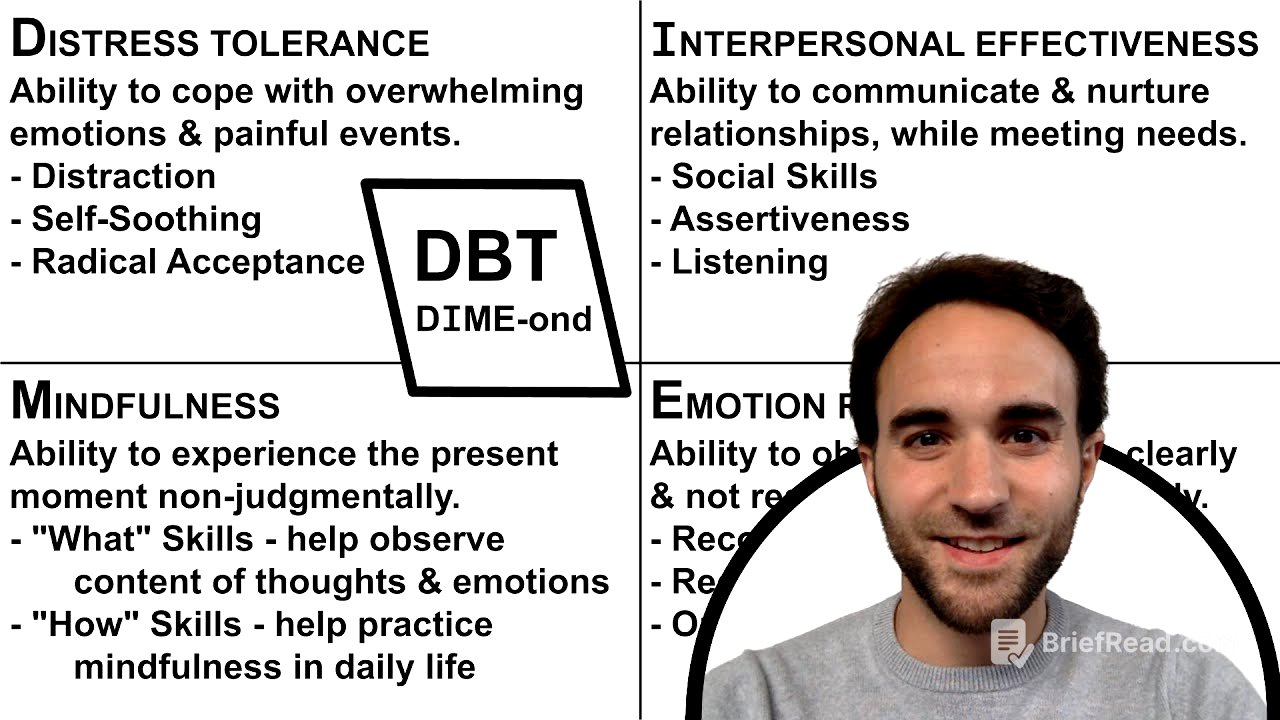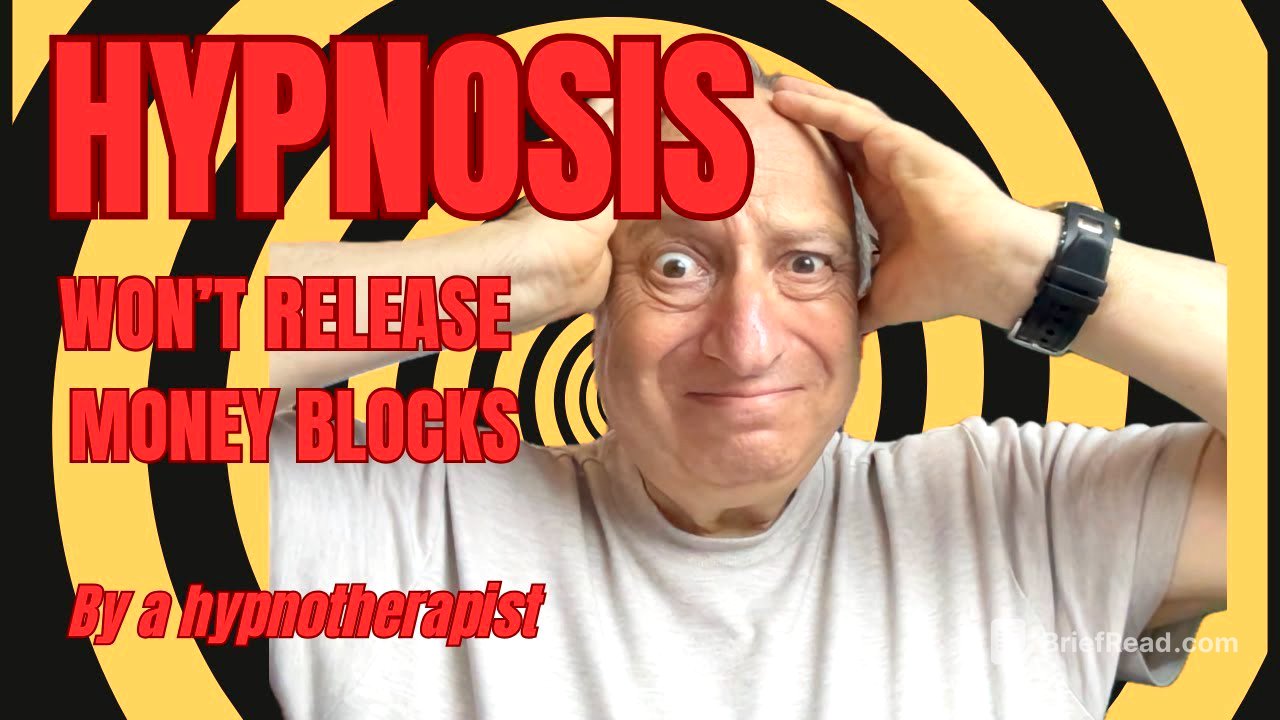TLDR;
This video provides an overview of Dialectical Behavior Therapy (DBT), a treatment designed for individuals struggling with emotional dysregulation, suicidality, and self-injurious behavior. It covers the biosocial theory underlying DBT, which posits that emotional dysregulation arises from a combination of biological vulnerabilities and invalidating environments. The video also outlines the three main components of DBT: group skills training, individual therapy, and phone coaching. Finally, it details the four categories of skills taught in DBT: distress tolerance, interpersonal effectiveness, mindfulness, and emotion regulation, remembered by the acronym "DIME."
- DBT is designed for emotional disregulation, suicidality, and self-injurious behavior.
- DBT includes group skills training, individual therapy, and phone coaching.
- DBT skills: distress tolerance, interpersonal effectiveness, mindfulness, and emotion regulation.
Introduction to Dialectical Behavior Therapy (DBT) [0:00]
Dialectical Behavior Therapy (DBT) is a therapeutic approach specifically designed for individuals who struggle with emotional dysregulation, particularly those experiencing chronic suicidality and self-injurious behaviors. While initially developed for borderline personality disorder, DBT has proven effective for various diagnoses characterized by emotional dysregulation. DBT integrates cognitive, behavioral, and mindfulness strategies to help patients build a life worth living.
Biosocial Theory [0:36]
The biosocial theory is a key underlying concept in DBT, suggesting that emotional dysregulation arises from a combination of biological and social factors, or nature and nurture. A person's inherent vulnerability to emotional dysregulation can be heightened by exposure to a chronically invalidating environment during their upbringing. This combination leads to the development of maladaptive coping mechanisms such as anger outbursts, violence, or self-harm. DBT aims to address this by shaping and reinforcing adaptive behaviors and providing the validating environment that was lacking in the person's early development.
Dialectics in DBT [1:21]
The "dialectical" aspect of DBT refers to the synthesis of opposing ideas, such as acceptance and change. This dialectic is central to the therapy, as patients are encouraged to accept themselves while simultaneously working to change maladaptive behaviors.
Components of DBT [1:43]
DBT consists of three main components: group skills training, individual therapy, and 24-hour phone coaching. Phone coaching is particularly important as it helps patients apply the skills they learn in therapy to real-world situations. DBT is an intensive treatment process that can involve multiple days per week of therapy. Due to the intensity and the emotional demands of working with patients receiving DBT, a comprehensive program includes a therapist consultation team to provide support and problem-solving assistance.
DBT Skills Categories [2:29]
The skills taught in DBT are divided into four categories: distress tolerance, interpersonal effectiveness, mindfulness, and emotion regulation. These categories can be remembered using the acronym "DIME."
Distress Tolerance [2:55]
Distress tolerance involves improving the ability to cope with overwhelming emotions and painful events. Skills in this category include distraction, self-soothing techniques, and the practice of radical acceptance. Radical acceptance, a core skill in DBT, involves acknowledging the present situation without judgment or self-criticism.
Interpersonal Effectiveness [3:17]
Interpersonal effectiveness focuses on improving communication and nurturing relationships while ensuring one's own needs are met. Skills include general social skills, assertiveness training, and effective listening.
Mindfulness [3:32]
Mindfulness involves improving the ability to experience the present moment non-judgmentally, without ruminating on the past or worrying about the future. This includes "what" skills, which help observe the content of thoughts and emotions, and "how" skills, which help practice mindfulness in daily life.
Emotion Regulation [3:53]
Emotion regulation involves improving the ability to observe emotions clearly and not react to them in harmful or destructive ways. This includes improving the ability to recognize emotions, reducing vulnerability to being controlled by emotions, and engaging in "opposite action," which means doing the opposite of what emotions are urging one to do.









